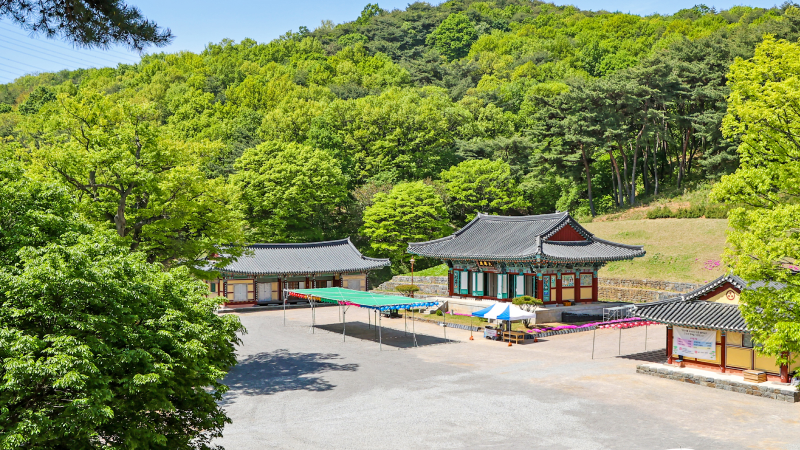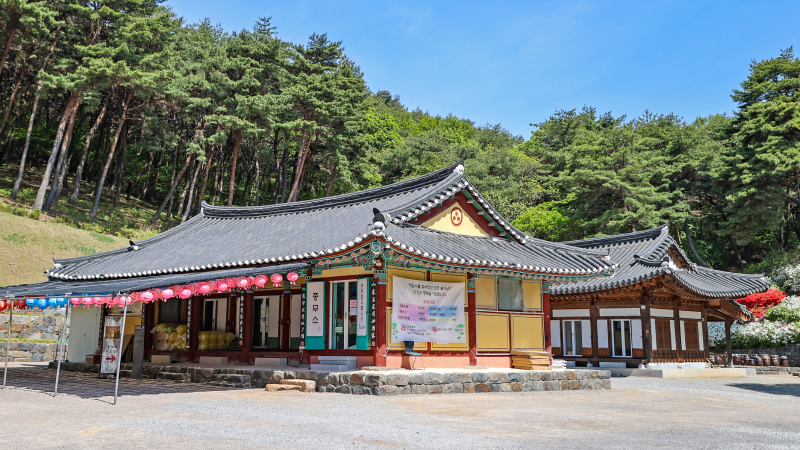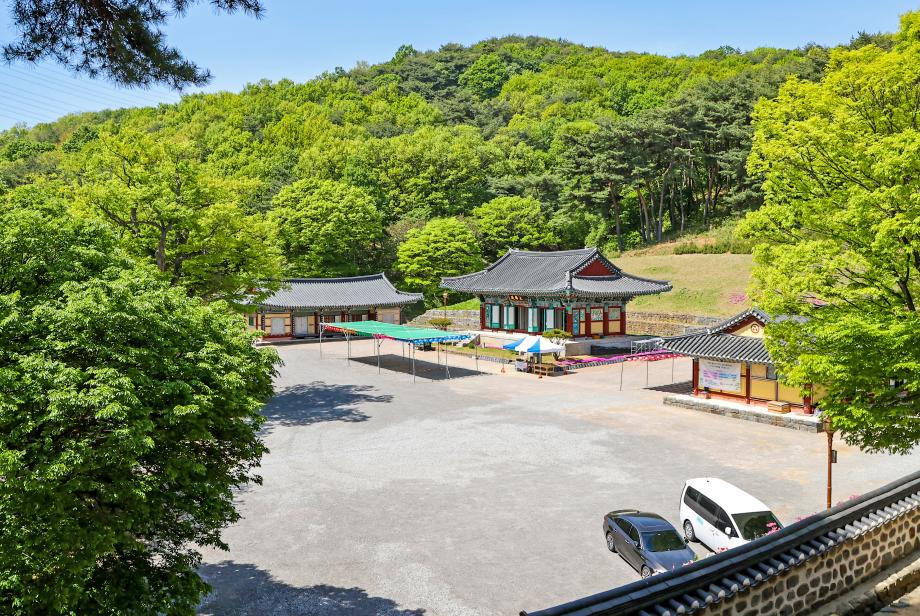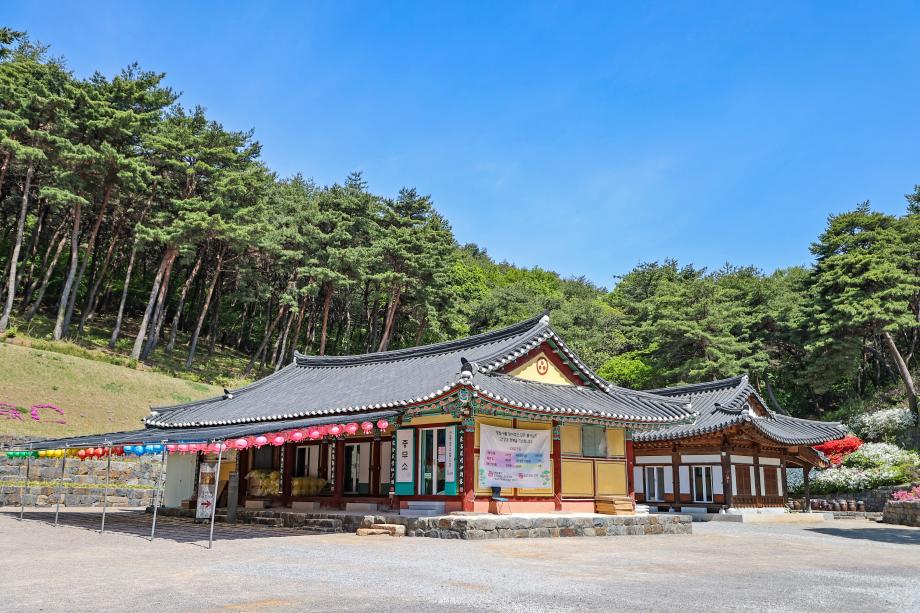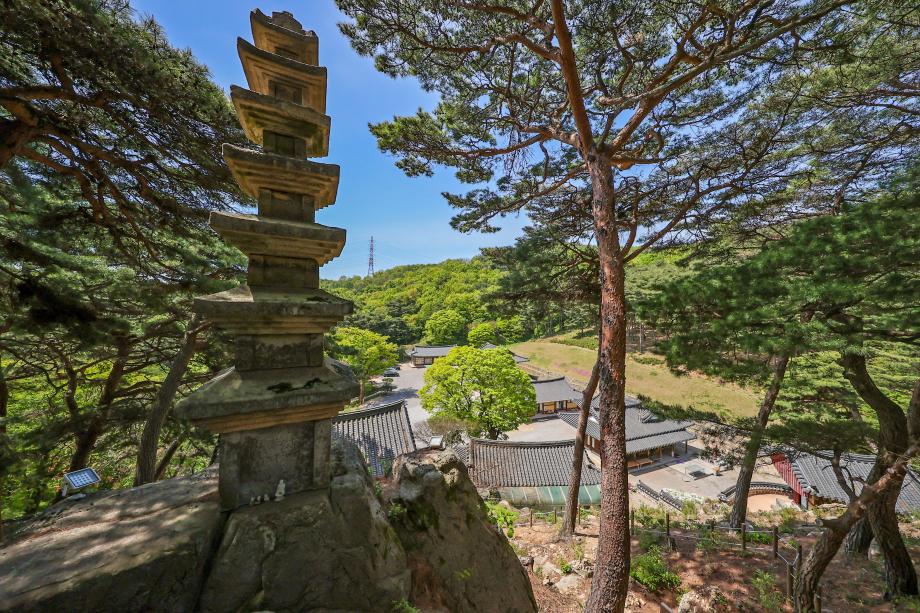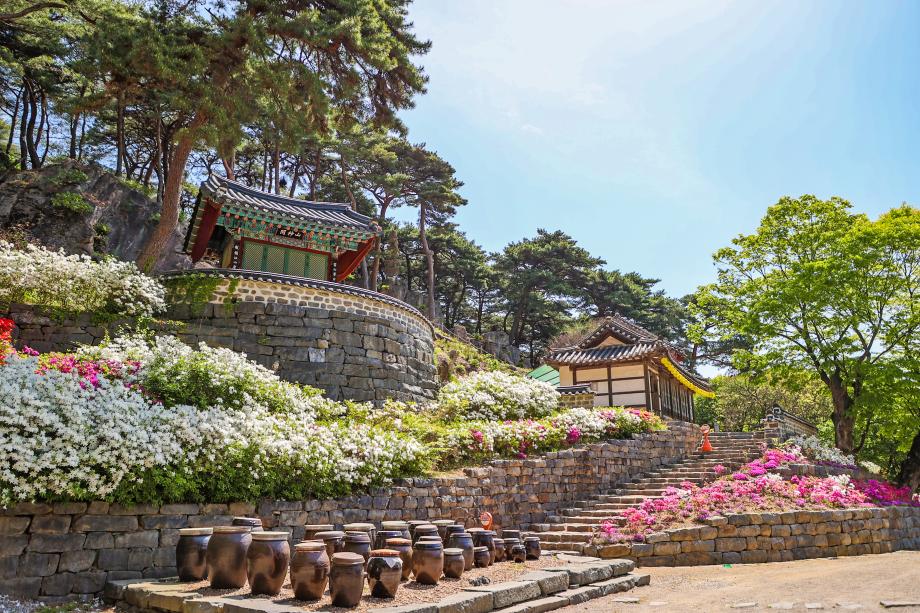본문 시작

Chungcheongnam-do, South Korea
Introduction
The Yeongtabsa Temple is a traditional temple with a thousand-year history, surrounded by majestic old trees and pine forests. It is located at the foot of Mt. Sangwangsan, north of Seonghari Village, Myeoncheon-myeon, Dangjin.
Though it is said that the Yeongtabsa Temple was founded by State Monk Doseon at the end of the Unified Silla Dynasty, there is no clear evidence to support this claim. It is further said that in the middle of the Goryeo Dynasty, Jinul, a state preceptor, built a five-story stone pagoda in front of the current main room and named the temple Yeongtabsa. Afterwards, Master Muhakdaesa Jacho carved a Buddha statue out of the natural rock at the site of the current temple, refurbished the temple, and moved the five-story stone pagoda from its original place, in front of the main hall, to the top of the rock behind the temple.
In Yeojidoseo (the national map) of the mid-18th century, it is recorded that “the Yeongtabsa Temple is located 5-ri (approx. 2km) west of the county,” confirming the existence of a temple in the late Joseon Dynasty. And in 1988, the Daeungjeon Hall (the main hall) was renovated to its current condition.
Buildings include the Daeungjeon Hall, the Yurigwangjeon Hall, the Sanshigak Shrine, and 2 Yosachae Buildings. Inside Daeungjeon, there was originally a Gilt-bronze Seated Vairocana Buddha Triad designated as Treasure No. 409, but it has been stored elsewhere after being recovered, following its theft, in 1975.
Also, inside the Daeungjeon Hall, there is a Beomjong (a large temple bell) that is designated as Chungcheongnam-do Cultural Heritage Material No. 219. In addition, the Yurigwangjeon Hall enshrines the Statue of the Bhaisajyaguru, designated as Chungcheongnam-do Tangible Cultural Property No. 111, and on the rock behind it stands the Yeongtabsa Seven-story Stone Pagoda, Chungcheongnam-do Cultural Heritage Material No. 216.
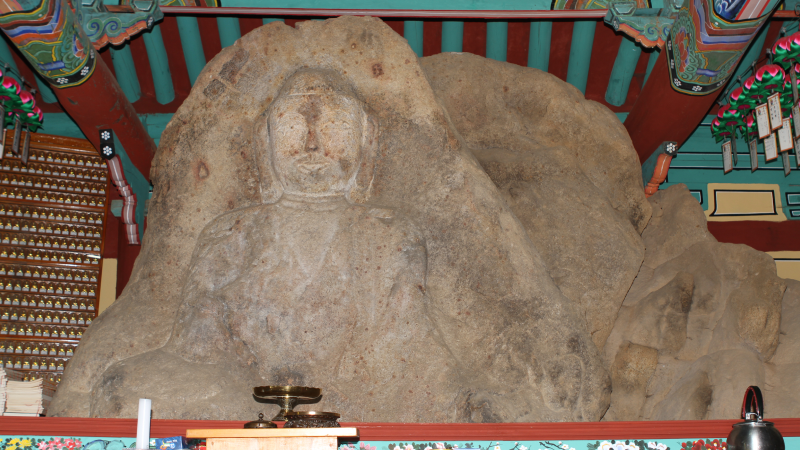
This Buddha statue was created during the Goryeo Dynasty and is said to cure human diseases and even ignorance. It is said that when the Buddhist monk Master Muhak looked around the temple at the end of the Goryeo Dynasty, he noticed a strange rock emitting light. He thought it so extraordinary that he carved a statue of the Bhaisajyaguruon the rock to pray for the well being of the country and people.
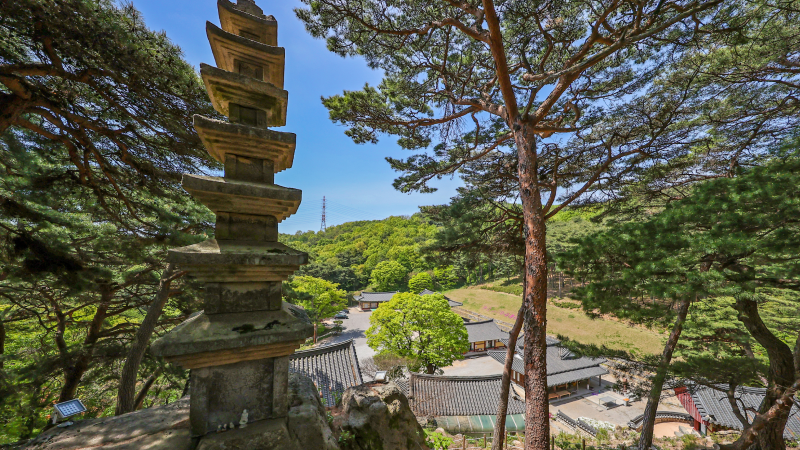
In the 22nd year of the reign of the Joseon Dynasty’s King Jeongjo (1798), Monk Jiyun of Yeonamdang built a five-storey pagoda on a rock and named the temple 'Yeongtapsa'. It was originally a seven-storey stone pagoda. However, following damage incurred later only five of the storeys remained. The temple's devotees restored the pagoda to its original 7-storey structure in the 1920s.

